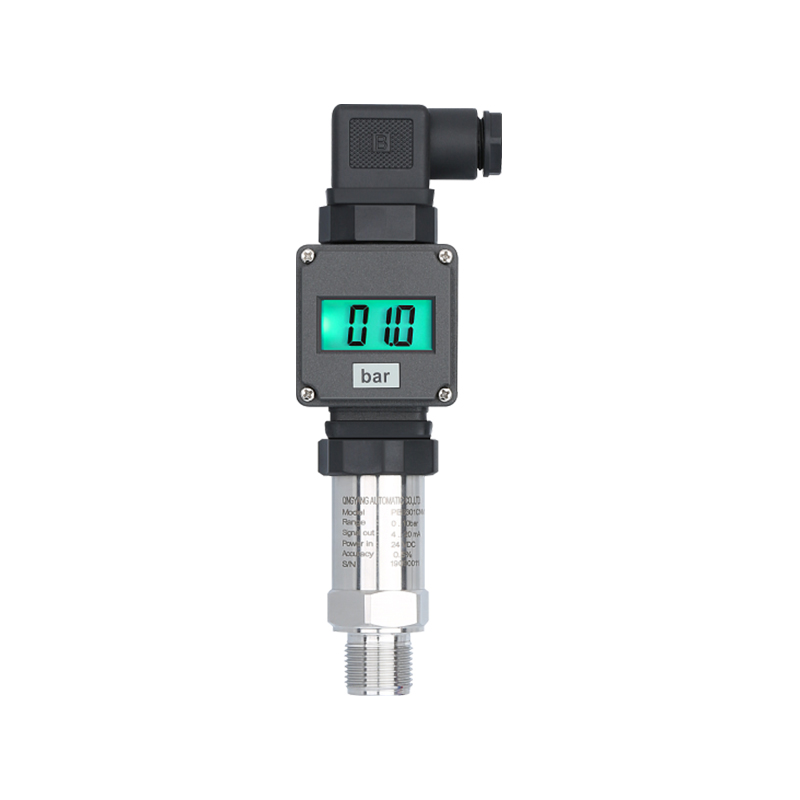Due to the wide range of applications of
liquid level sensors, different detection methods have their advantages and disadvantages. Let's take a look at the common liquid level measurement methods.
1. Floating ball detection This method is the simplest and oldest detection method, and the price is relatively cheap. It mainly detects the change of the liquid level through the up and down of the floating ball. It is a mechanical detection. The detection accuracy is easily affected by the buoyancy, and the repeatability is poor. Different liquids need to be recalibrated. It is not suitable for viscous or impurity liquids, which may easily cause blockage of the floating ball. At the same time, it does not meet the application requirements of the food hygiene industry.
2. Capacitive measurement Capacitive measurement mainly measures the height of the material level by detecting the change of the capacitance value caused by the change of the liquid level or the height of the bulk material. It has various types, including capacitive liquid level gauges that can output analog quantities, liquid level capacitive proximity switches, and capacitive proximity switches that can be installed on the side of the container for non-contact detection. Care must be taken when selecting, capacitive sensors are susceptible to different container materials and solution properties.
3. Static pressure measurement
This measurement method uses a pressure sensor installed at the bottom to convert and calculate the liquid level height by detecting the liquid pressure at the bottom. The reference value of the liquid pressure at the bottom is the atmospheric pressure or known air pressure connected to the top. This detection method requires the use of high-precision, flush pressure sensors, and the conversion process requires continuous calibration.
4. Photoelectric refraction measurement
This detection method emits a light source inside the sensor, and the light source is totally reflected to the sensor receiver through the transparent resin, but when it encounters the liquid surface, part of the light will be refracted to the liquid, so that the sensor detects the decrease in the total reflected light value to monitor the liquid level. This detection method is cheap and easy to install and debug, but it can only be applied to transparent liquids, and only output switching signals.
5. Tuning fork vibration measurement
The tuning fork measurement is only a switching output and cannot be used for continuous monitoring of the liquid level. The principle is: when the liquid or bulk material fills the two vibrating forks, when the resonance frequency changes, a switch signal is sent out depending on the detection frequency change. It can be used for height monitoring of high-viscosity liquids or solid bulk materials, mainly for overflow prevention alarms, low liquid level alarms, etc. It does not provide analog output. In addition, in most cases, holes need to be installed on the side of the container.
6. The principle of ultrasonic measurement is to calculate the liquid level height by detecting the time difference between ultrasonic transmission and reflection, so it is easily affected by the energy loss of ultrasonic transmission. It also has the characteristics of easy installation and high flexibility, and can usually be installed at high places for non-contact measurement. However, when used in environments containing steam, powder layers, etc., the detection distance will be significantly shortened, and it is not recommended to be used in microwave-absorbing environments, such as foam.
7. Microwave principle measurement
Its name has many different names in the industry. It has the advantages of laser measurement, such as: easy installation, calibration, good flexibility, etc. In addition, it is better than laser detection, such as no need for repeated calibration and multi-function output, etc. , which is suitable for all kinds of liquid level detection containing foam, not affected by the color of the liquid, even can be applied to high-viscosity liquids, relatively little interference from the external environment, but its measurement height is generally less than 6 meters.
 PB8301CNM level integrated transmitter
PB8301CNM level integrated transmitterNingbo Qingyang Automation Technology Co., Ltd. is famous China Ordinary liquid level (pressure) transmitter suppliers and OEM/ODM Ordinary liquid level (pressure) transmitter manufacturers. We have advanced and complete top-notch testing equipment in the industry, physical testing laboratories, automatic pressure calibration equipment, automatic temperature calibration equipment, wholesale Ordinary liquid level (pressure) transmitter etc.


































































 English
English русский
русский














